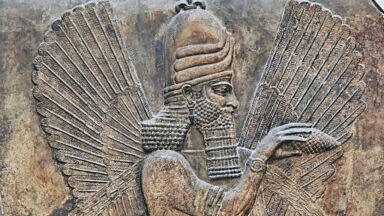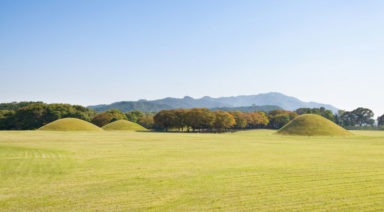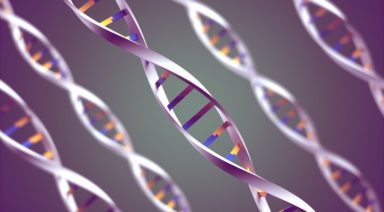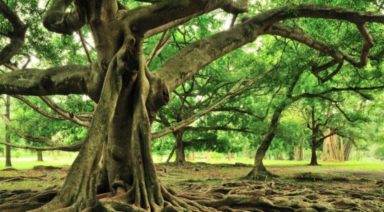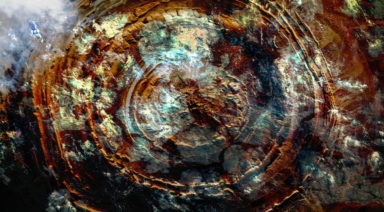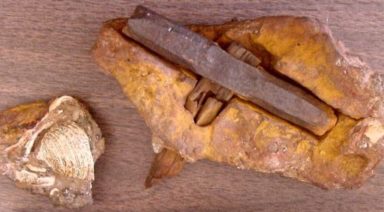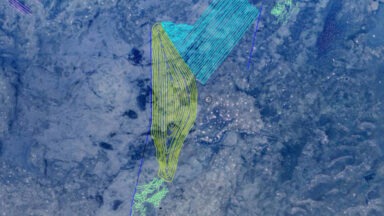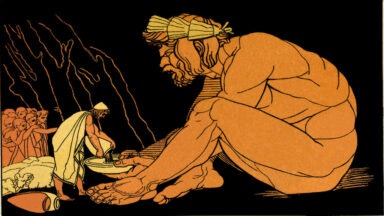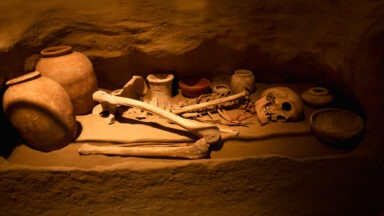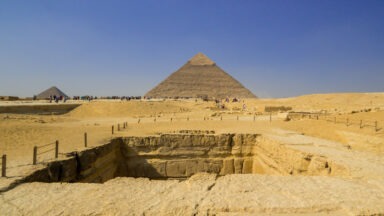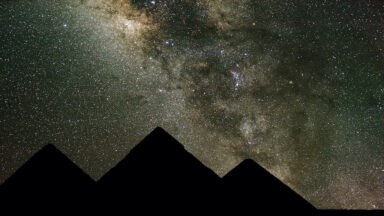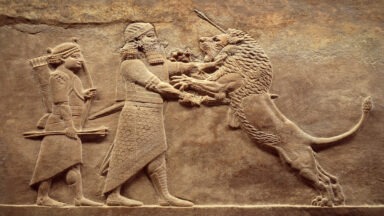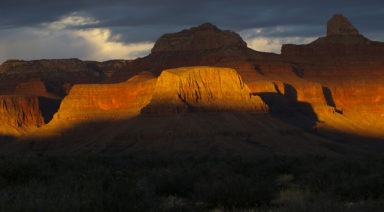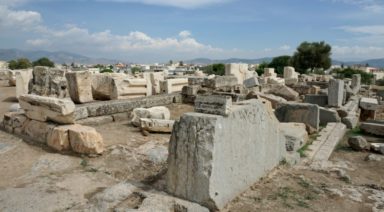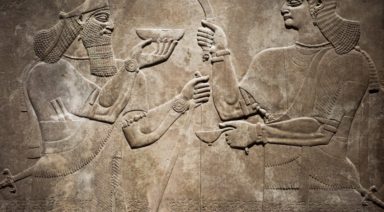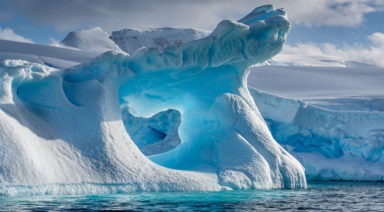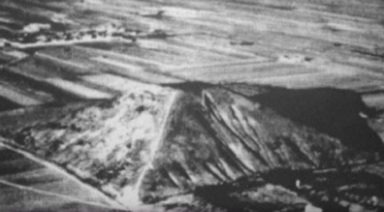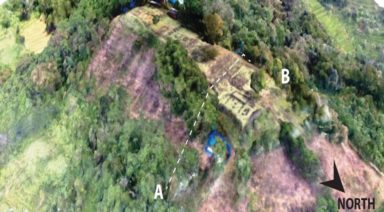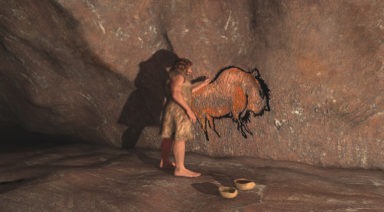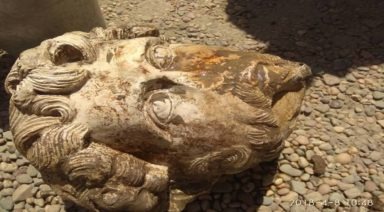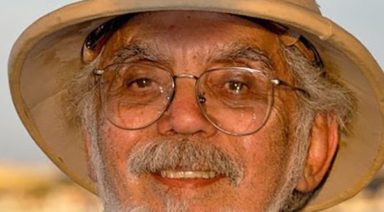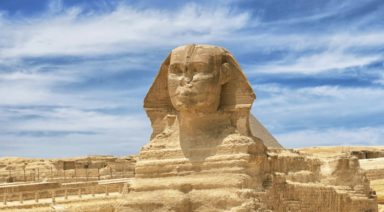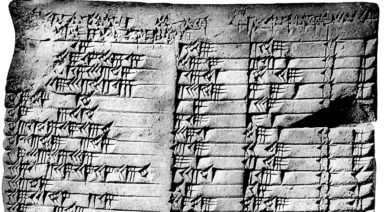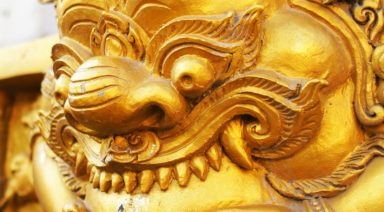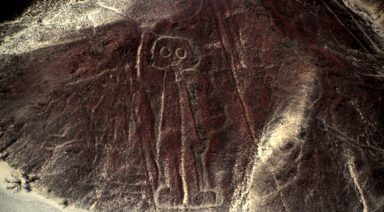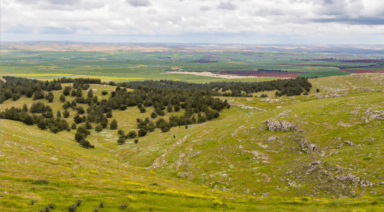Asteroid That Killed Dinosaurs; Would You Exist If It Hit Anywhere Else?
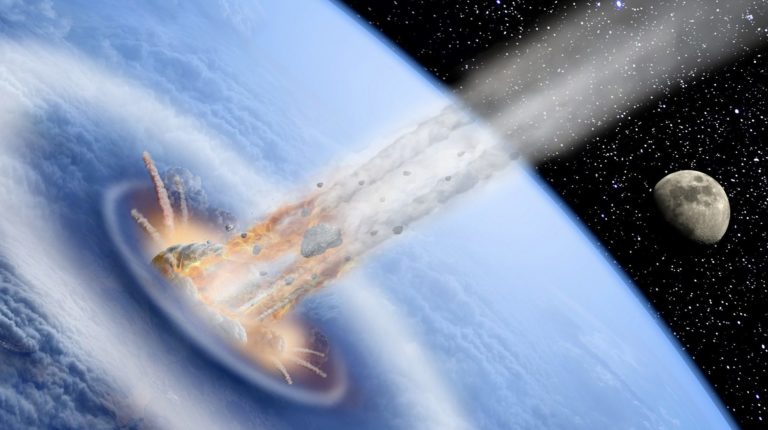
About 66 million years ago, an asteroid slammed into the Mexican Yucatan Peninsula at a speed of about 54,000 mph. Massive tsunamis, several-hundred-feet-tall, washed across North and South America wiping out almost all land-faring creatures. Fiery rock fragments rained from the sky, and the atmosphere filled with soot, blocking the Sun for weeks to come. But as it turns out, if this asteroid that killed the dinosaurs had hit the Earth as little as 30 seconds earlier or later, the event might not have been as cataclysmic, and the dinosaurs may not have gone extinct.
Where Did the Asteroid That Killed the Dinosaurs Land?
The Chicxulub crater on the tip of the Yucatan Peninsula in Mexico, is the site where the 9-mile-wide asteroid hit, wiping out the dinosaurs. Upon impact, it hit the Earth with a force 10 billion times that of the nuclear bomb dropped on Hiroshima during WWII. The earthquake created by this impact would have been 1000 times more intense than any earthquake ever recorded in modern history.
A large amount of heat was released when it struck, but in the weeks to come global temperatures dropped between 14-18 degrees Fahrenheit. On land however, temperatures dropped up to 29 degrees Fahrenheit, due to mass amounts of dust and gas that became trapped in the Earth’s atmosphere, blocking out the Sun and eventually killing off the rest of the dinosaurs.
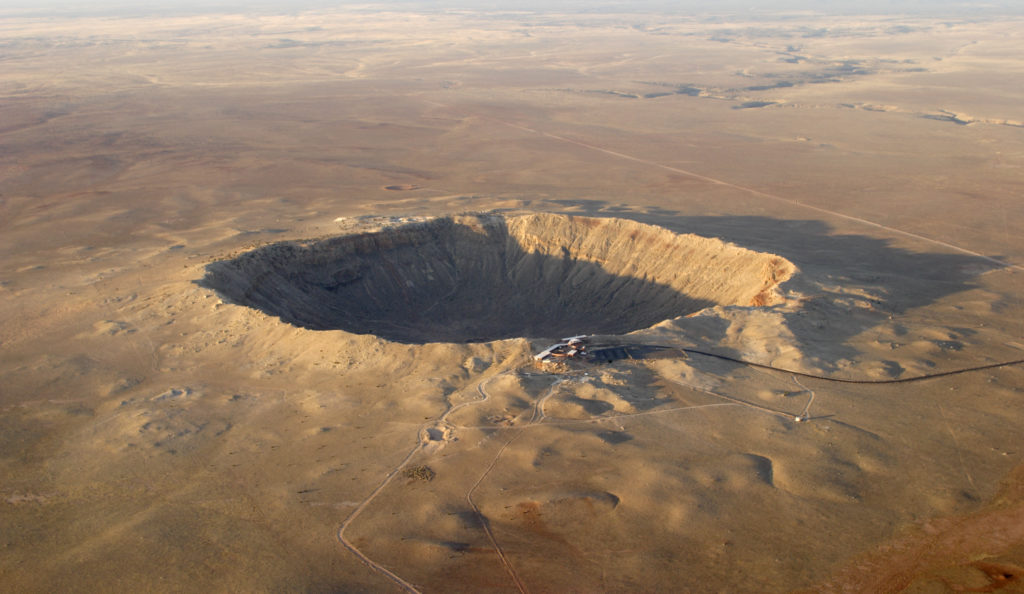
There are two parallel theories about what actually caused this nuclear winter, but both agree that the rare site of impact was what lead to it. This area of sedimentary rock was either sulphur or oil-rich, and areas like these are only present on 13 percent of the Earth’s surface. This means that there was an incredibly narrow window for that asteroid to land where it did, with 87 percent of the Earth’s surface area available for an impact that would not have caused the mass extinction.
There is also plenty of evidence of other large asteroids striking Earth around that time which didn’t lead to a mass extinction, making the timing of this asteroid all the more extraordinary.
What If the Asteroid That Killed the Dinosaurs Missed?
We are bombarded by asteroids and meteors all the time; the most recent destructive instance was in Russia in 2013, in the form of a meteor from a 65-foot, near-earth asteroid. The Chelyabinsk meteor injured 1,500 people and led to tens of millions of dollars in damage, making it the largest and most destructive impact of the century – and it didn’t even hit the ground.
Meteors this size are rare and even larger ones, like the one that killed the dinosaurs, only come around every few million years. Individually, we have 1: 250,000 odds of dying from a meteor strike, and even then, the chance of a meteor hitting land is very slim with 71 percent of Earth’s surface being covered by water. But while most meteors burn up before hitting the Earth, atmospheric impacts can still be destructive.
So, what would have happened if the asteroid didn’t cause the dinosaur apocalypse? Would they still be around today? Would it have impeded our evolution as a species or would they still have gone extinct?
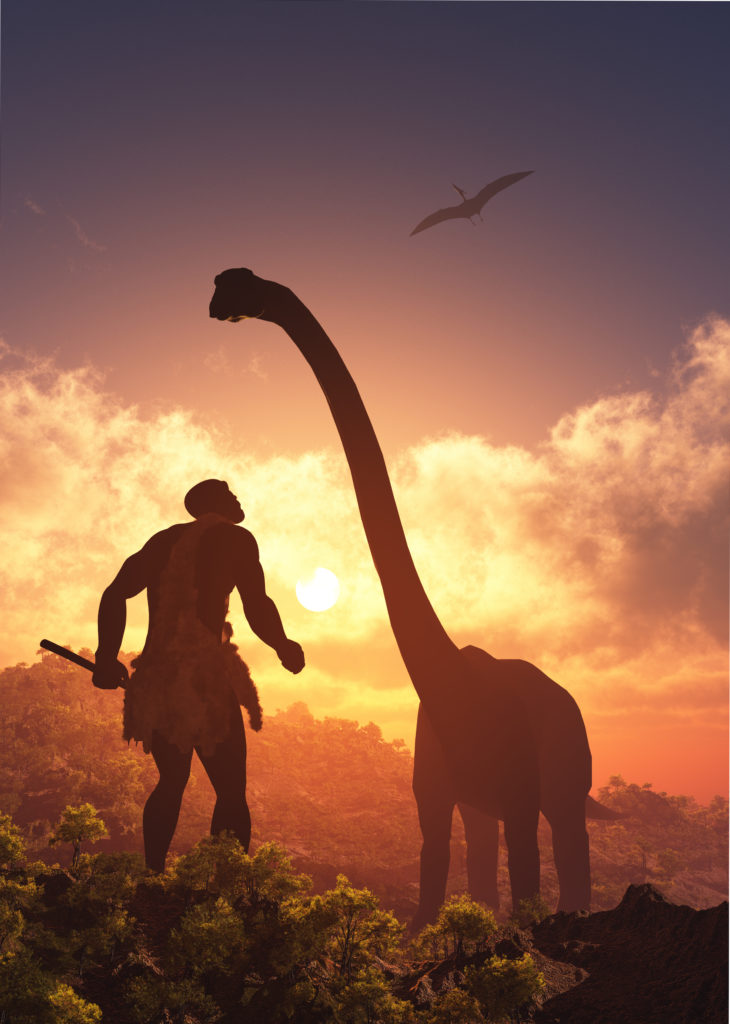
That question is debatable with some scientists believing these prehistoric creatures were already on a path to extinction. The cooling temperature of the Earth could have prevented some species from continuing on, while other species may have survived. Though, some scientists believe certain species of dinosaurs were adapting to the cooler temperatures by shrinking in size.
Was the Impact a Coincidence?
With the precise moment and location that the asteroid hit the Earth, in one of the worst imaginable spots, it could be interesting to entertain the theory that maybe the impact was intentional, if not just highly coincidental. This idea falls in line with the concept of directed panspermia, the theory of an advanced alien race that intentionally seeds a planet with the building blocks of life. Could a highly advanced species have recognized that our planet had the necessary environment to harbor life, but that the dinosaurs would have posed a major impediment to our evolution?
Or to take less of an extraterrestrial creationist position, is there a possibility that the asteroid came from a planet or solar system where life existed, carrying microorganisms to seed Earth? This type of theory is actually accommodated by more mainstream views. In fact, it has been proven that the asteroid strike catapulted rocks capable of containing lifeforms to the far reaches of our solar system, possibly landing on Mars and habitable moons of Jupiter. While this type of biological seeding between planets in a solar system is likely, intergalactic panspermia would be a bit more difficult.
There is ample evidence that shows large, meteoric impacts likely brought the building blocks of life to Earth, over 4 billion years ago. Bacteria, sugars and amino acids could have hitched rides on these space rocks, crash landed on Earth, and germinated the planet. If these planets, moons, or other celestial bodies contained frozen water, the impact could have melted the ice, creating a habitable environment for life to incubate.
Could the asteroid that killed the dinosaurs have fit somewhere between these two hypotheses? Or was it all merely coincidental?
The History of the Anunnaki, Creators of Humanity?
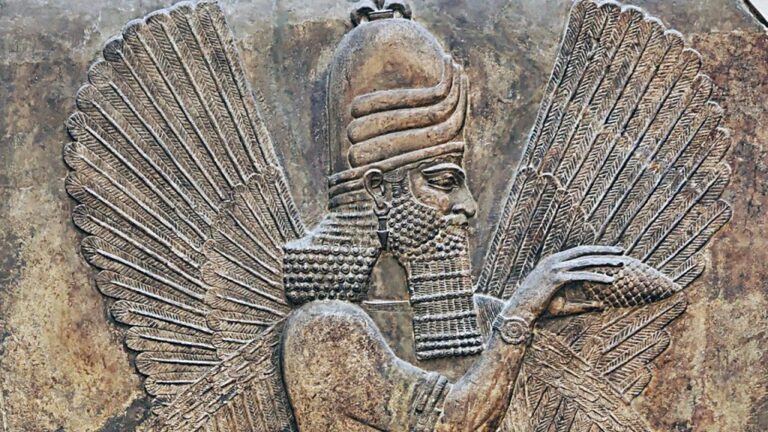
The Anunnaki are mentioned in ancient Sumerian texts as powerful deities who descended from the sky to influence human civilization. These beings not only guided the Sumerians in the development of their culture, but also participated in the creation and evolution of mankind. In this article we explore who the Anunnaki were, their characteristics, and how their presence has been interpreted in different historical and cultural contexts.
Table of Contents
- Who Are the Anunnaki?
- Characteristics of the Anunnaki According to Ancient Texts
- Origin and Meaning of the Term Anunnaki
- The Anunnaki and the Creation of the Human Being
- The Anunnaki in the Bible and Other Sacred Texts
- The Connection Between the Anunnaki and Atlantis
- Are the Anunnaki Still on Earth Today?
Who Are the Anunnaki?
The Anunnaki are a race of deities mentioned in Sumerian mythology, considered to be the sons of Anu, the sky god. These deities were revered for their power and wisdom, and were believed to rule the Earth and the underworld. The Sumerians recorded on their cuneiform tablets the existence of the Anunnaki and their intervention in human affairs, attributing to them the creation of civilization through the transmission of advanced knowledge in astronomy, agriculture, architecture and medicine.
The writer and researcher Zecharia Sitchin popularized the idea that the Anunnaki were extraterrestrial beings from the planet Nibiru. According to Sitchin, these gods arrived on Earth some 450,000 years ago and, through genetic engineering, created Homo sapiens by mixing their DNA with that of terrestrial primates. The main purpose of this intervention was to use humans as labor to extract gold and other natural resources.
In the series Ancient Civilizations, available on Gaia, these theories are explored through various archaeological evidence and ancient texts, offering fascinating insights into the influence of the Anunnaki on human history.
Characteristics of the Anunnaki According to Ancient Texts
Sumerian texts and other ancient traditions attribute to the Anunnaki a number of extraordinary characteristics that distinguish them from other mythological or historical beings. These descriptions allow us to better understand why they were considered figures of superior power and wisdom.
- Celestial origin: They were said to have descended from the sky, specifically from the planet Nibiru, whose elliptical orbit periodically connected them with the Earth.
- Advanced technology: They possessed superior technical knowledge in fields such as astronomy, medicine, engineering and architecture.
- Imposing appearance: They were described as tall beings, with defined features, long hair and beard, conveying authority and divinity.
- Extreme longevity: It was believed that they could live for thousands of years, which is reflected in the long reigns recorded in the Sumerian King List.
- Genetic capabilities: According to Sitchin, they mastered DNA manipulation and created human hybrids for specific tasks, such as mining.
- Role of rulers: They ruled cities and regions, establishing laws and rules that structured Sumerian social and political life.
- Lasting cultural influence: His teachings left deep traces in Mesopotamian culture, in religious practices, symbols and architectural structures.
Origin and Meaning of the Term “Anunnaki”
The term “Anunnaki” comes from Akkadian and translates as “those who descended from heaven”. In turn, it derives from the Sumerian Anunna, which means “the sons of Anu”, the supreme god of the sky in Mesopotamian cosmology. This name reflects the divine and celestial character of these beings, who were seen as intermediaries between the world of the gods and that of humans.
In Sumerian cuneiform tablets, the Anunnaki appear as figures with authority to establish order on Earth and in the underworld. Their constant presence in mythical accounts suggests that they were not simply local deities, but entities with a fundamental role in the creation, destiny and governance of the human and spiritual world.
The Anunnaki and the Creation of the Human Being
One of the most debated aspects of the Anunnaki is their participation in the creation of human beings. According to the theories proposed by Zecharia Sitchin, the Anunnaki would have arrived on Earth some 450,000 years ago with the objective of extracting gold to restore the atmosphere of their planet, Nibiru. To facilitate this task, they found it necessary to create a workforce adapted to the conditions of the planet.
According to this view, the Anunnaki used their knowledge of genetics to manipulate the DNA of primitive hominids and combine it with their own. The result would have been a new species: Homo sapiens. This hybrid being was not only capable of following orders and performing physical tasks, but also inherited some of the intelligence and technical skills of its creators.
In addition to creating a new life form, the Anunnaki would have guided its cultural development. They did not limit themselves to giving biological origin to human beings, but also sowed the first notions of social organization, spirituality and technology. This would explain, for some researchers, the rapid evolutionary and civilizational leap observed in the archaeological records of Mesopotamia.
-
Genetic Manipulation and Origin of Homo Sapiens
Genetic manipulation appears to be central to the theory of human creation by the Anunnaki. Sitchin posits that these beings had the ability to alter the genetic code with precision, a knowledge far beyond what ancient civilizations could have developed on their own. This act of biological engineering would have given rise to a species capable of reasoning, communicating and collaborating in complex activities.
This new being, the product of a fusion between extraterrestrial and terrestrial DNA, was designed with a functional purpose: to serve the Anunnaki in mining and other tasks. However, over time, this hybrid would have acquired self-awareness and developed capabilities beyond the control of its creators. This would have led to internal tensions among the Anunnaki themselves regarding the future of humanity.
-
Knowledge Transmitted to Ancient Civilizations
In addition to their biological intervention, Sumerian accounts indicate that the Anunnaki shared a wealth of knowledge with humans. This knowledge included astronomy, mathematics, architecture and agricultural practices that fueled the rise of the Mesopotamian civilization. Sumerian temples, ziggurats and irrigation systems are seen as evidence of this advanced legacy.
This transmission of knowledge was not random. The Anunnaki would have chosen specific human lineages to continue their teaching, giving rise to priestly castes and kings who ruled with “divine” authority. Through these intermediaries, the teachings of the Anunnaki were integrated into the social and spiritual structure of early human cultures, many of which continued to worship them as gods for centuries.
The Anunnaki in the Bible and Other Sacred Texts
Some researchers claim that the Anunnaki appear in the Bible under the name of the Nephilim. Genesis 6:4 describes these beings as the “sons of God” who united with the “daughters of men,” giving rise to a race of giants. This narrative bears similarities to Sumerian stories, where celestial gods interact and interbreed with humans, generating special lineages.
Other religious traditions also contain references to superior beings descending from heaven to guide or intervene in human affairs. Apocryphal texts such as the Book of Enoch expand on these descriptions, mentioning the “Watchers,” entities that taught mankind advanced knowledge. These coincidences have led some authors to propose that sacred figures in different cultures may have a common origin in the stories of the Anunnaki.
The Connection Between the Anunnaki and Atlantis
The alleged relationship between the Anunnaki and Atlantis stems from the idea that both represent highly advanced civilizations that existed in antiquity. Some theorists claim that the Anunnaki could have been the true founders of Atlantis, transmitting their technology and knowledge to the first Atlanteans. This hypothesis would explain the level of sophistication attributed to this mythical civilization.
When Atlantis was destroyed, according to Plato’s accounts, some survivors would have taken this knowledge with them to other parts of the world. This would have given rise to new cultures such as the Egyptian, Mesopotamian and Andean civilizations. From this perspective, the legacy of the Anunnaki did not end with Atlantis, but was dispersed throughout the planet through these migrations.
Are the Anunnaki Still on Earth Today?
The possibility that the Anunnaki are still present on Earth is an idea that has gained momentum among certain groups of researchers and enthusiasts. According to this theory, these beings never completely left the planet, but continued to operate from hidden planes or through human elites with whom they would be linked. Some even suggest that they influence global politics, economics and technological development.
However, there is no evidence to support these claims. Most scholars consider these ideas to be speculative. Even so, interest in the figure of the Anunnaki continues to grow, fueled by ancient texts, archaeological finds and the increasing exploration of alternative narratives about the origin of humanity.


